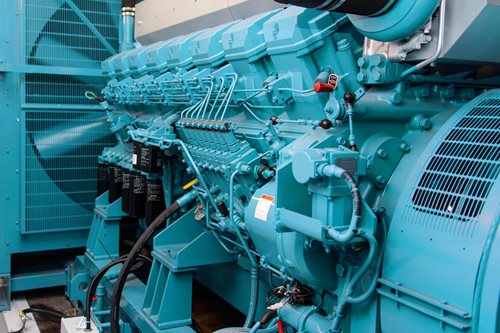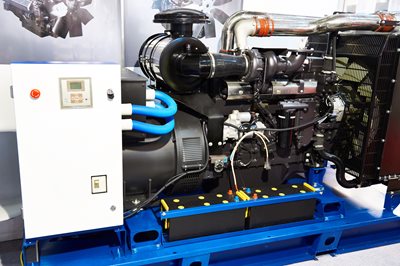Understanding Diesel Generator Specifications: kW, kVA and Power Factor
Diesel gensets are commonly used to provide backup power to businesses, medical facilities, and builders in the event of a power outage from the local grid going down. In other scenarios, diesel generators are used as permanent power sources in areas across the globe that may not have adequate grid coverage such as a remote oil fields, a distant farming facility, and isolated mining facilities. Choosing the right generator for the job requires an understanding of technical specifications which this blow will help provide.
When a diesel generator is operating under the proper conditions in which is was designed for, the  generator will operate on high efficiency and enjoy a longer service life. In order to ensure your investment is the perfect machinery for the job, a purchases should understand the relationships between kilowatts (kW), kilovolt-amperes (kVA) and power factor (PF) in diesel generators.
generator will operate on high efficiency and enjoy a longer service life. In order to ensure your investment is the perfect machinery for the job, a purchases should understand the relationships between kilowatts (kW), kilovolt-amperes (kVA) and power factor (PF) in diesel generators.
-
Kilowatts (kW) measure the real electric power supplied by the diesel generator. This power is used by the equipment and appliances within the building.
-
Kilovolt-amperes (kVA) measures the apparent power of the diesel generator.
-
The power factor (PF) is the ratio between real power and apparent power. For example, if a building consumes 1900 kW and 2000 kVA, the power factor is ~90%.
On the diesel generators nameplate you’ll find the kW, kVA and PF values. The operating conditions of the generator are determined by the connected load rather than the generator itself. It’s recommended using a professional electrical engineer to provided the proper unit sizing for your new or used diesel generator investment.
What Limits the Output of a New or Used Diesel Generator?
The diesel engine capacity is the limiting factor in the maximum kW output a diesel generator can provide. As long as the kW and kVA stay below their rated values, a diesel generator can exceed its rated power factor. We don’t recommend going below the rated power factor as the diesel generator will not operate as efficiently. The generator can be damaged if the kW or the kVA rating is exceeded.
 It’s also important to understand how the leading and lagging power factor affects diesel generators. When the generator’s voltage is ahead of the current, the electrical load has a lagging power factor. This type of load behavior is called inductive which encompasses transformers and electric motors. If the current is ahead of the voltage, the load is experiencing a leading power factor.This type of load behavior is called capacitive which encompasses capacitor banks and batteries.
It’s also important to understand how the leading and lagging power factor affects diesel generators. When the generator’s voltage is ahead of the current, the electrical load has a lagging power factor. This type of load behavior is called inductive which encompasses transformers and electric motors. If the current is ahead of the voltage, the load is experiencing a leading power factor.This type of load behavior is called capacitive which encompasses capacitor banks and batteries.
Many builds you see in everyday life have more inductive loads than capacitive loans. That entails the power factor is typically lagging. Diesel generators were designed for this specific load type. In instances where buildings have capacitive loans, the generator voltage can become unstable with a leading power factor. This phenomenon will trigger automatic protections thereby disconnect the diesel generator from the building. For these reasons it’s important to consult with an experience electrician or engineer to understand the specific generator requirements your building may need.
Contact Generator Source today for all your new or used diesel generator needs! We’ve been in business for 40 years and have the experience, support, and team of professionals to meet your generator needs.
Kyle Smith
| 5/15/2020 9:37:13 AM
|
0 comments